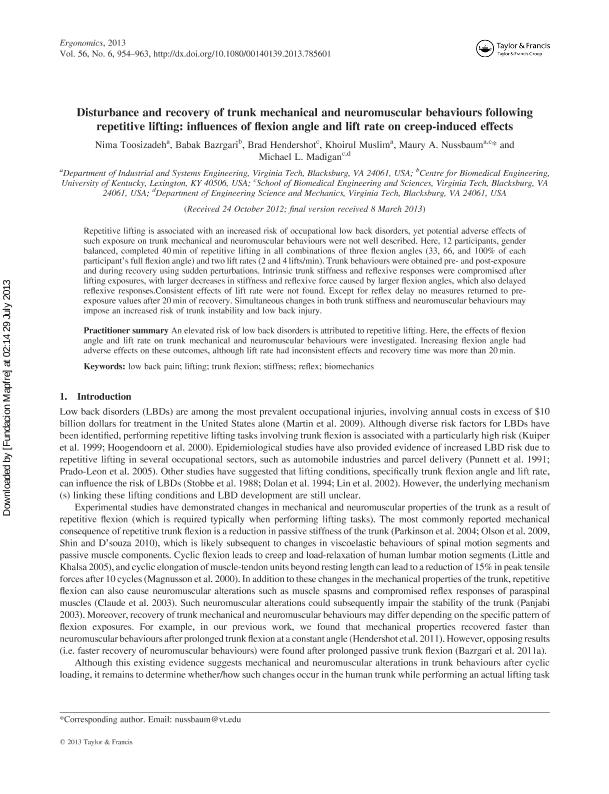Disturbance and recovery of trunk mechanical and neuromuscular behaviours following repetitive lifting : influences of flexion angle and lift rate on creep-induced effects

Contenido multimedia no disponible por derechos de autor o por acceso restringido. Contacte con la institución para más información.
| Tag | 1 | 2 | Valor |
|---|---|---|---|
| LDR | 00000cab a2200000 4500 | ||
| 001 | MAP20130023533 | ||
| 003 | MAP | ||
| 005 | 20130829132358.0 | ||
| 008 | 130729e20130603esp|||p |0|||b|spa d | ||
| 040 | $aMAP$bspa$dMAP | ||
| 084 | $a875 | ||
| 245 | 0 | 0 | $aDisturbance and recovery of trunk mechanical and neuromuscular behaviours following repetitive lifting$b: influences of flexion angle and lift rate on creep-induced effects$cNima Toosizadeh...[et.al] |
| 520 | $aRepetitive lifting is associated with an increased risk of occupational low back disorders, yet potential adverse effects of such exposure on trunk mechanical and neuromuscular behaviours were not well described. Here, 12 participants, gender balanced, completed 40 min of repetitive lifting in all combinations of three flexion angles (33, 66, and 100% of each participant's full flexion angle) and two lift rates (2 and 4 lifts/min). Trunk behaviours were obtained pre- and post-exposure and during recovery using sudden perturbations. Intrinsic trunk stiffness and reflexive responses were compromised after lifting exposures, with larger decreases in stiffness and reflexive force caused by larger flexion angles, which also delayed reflexive responses.Consistent effects of lift rate were not found. Except for reflex delay no measures returned to pre-exposure values after 20 min of recovery. Simultaneous changes in both trunk stiffness and neuromuscular behaviours may impose an increased risk of trunk instability and low back injury. | ||
| 773 | 0 | $wMAP20100019818$tErgonomics : the international journal of research and practice in human factors and ergonomics$dOxon [United Kingdom] : Taylor & Francis, 2010-$x0014-0139$g03/06/2013 Volumen 56 Número 6 - junio 2013 , p. 954-963 |

